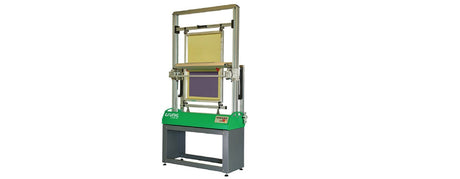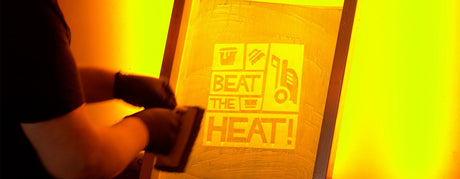
Screen Coating Made Simple with the Grunig G-Coat 406S
You know that precision is essential, especially when it comes to coating screens. The latest innovation to land at Ryonet is designed to take the stress out of that critical...

You know that precision is essential, especially when it comes to coating screens. The latest innovation to land at Ryonet is designed to take the stress out of that critical...

Welcome back to another Deep Dive with Colin! Today, Colin’s diving into something super important for screen printing: cleaning and reclaiming your screens the right way. It’s not just about wiping...

Welcome back to another Deep Dive with Colin! This topic will be focused on a fundamental aspect of screen printing: coating a screen to get a perfect stencil. This is...

Several types of emulsions exist on the market. How do you decide on which emulsion is best for you? First, you must ask yourself a few questions.

Ready to start screen printing? It's a big jump, but it's so worth it. To build your shop, you will need to obtain some equipment and supplies. Our Sales and...

Big news for all our screen printing enthusiasts out there – we’re super excited to introduce Chromaline products to our lineup! This high-quality product line of emulsions and more will help you...

To create a stellar print, you need a solid screen. Using high-quality emulsion and dialing in exposure times help, but it's a fraction of what's needed. Your darkroom matters. One major update...

Not all emulsions respond the same when coating screens: some emulsions require adjustments in pressure and speed, depending on the emulsion thickness and the type of mesh you're working with on your...

It's that time of year again. There is a bite to the air, frost on your car windows, there might even be a dusting of snow outside your front door....

Every screen print starts in the darkroom, and every screen starts with a good coat of emulsion. Follow along as darkroom expert Colin Huggins walks through the basics of mixing...

A screen printing job takes a lot of man hours. The whole process, from art prep to screen reclaim, takes time and effort to constantly hone in processes and learn...

Coating a screen is important to create the perfect base layer for a great print. Accomplishing this task can be done in a couple of different ways. You can coat screens by...

Size matters in screen printing. But it’s not just about how big your press or conveyor is. The sizing of all your equipment and supplies is important, even down to squeegees and scoop...